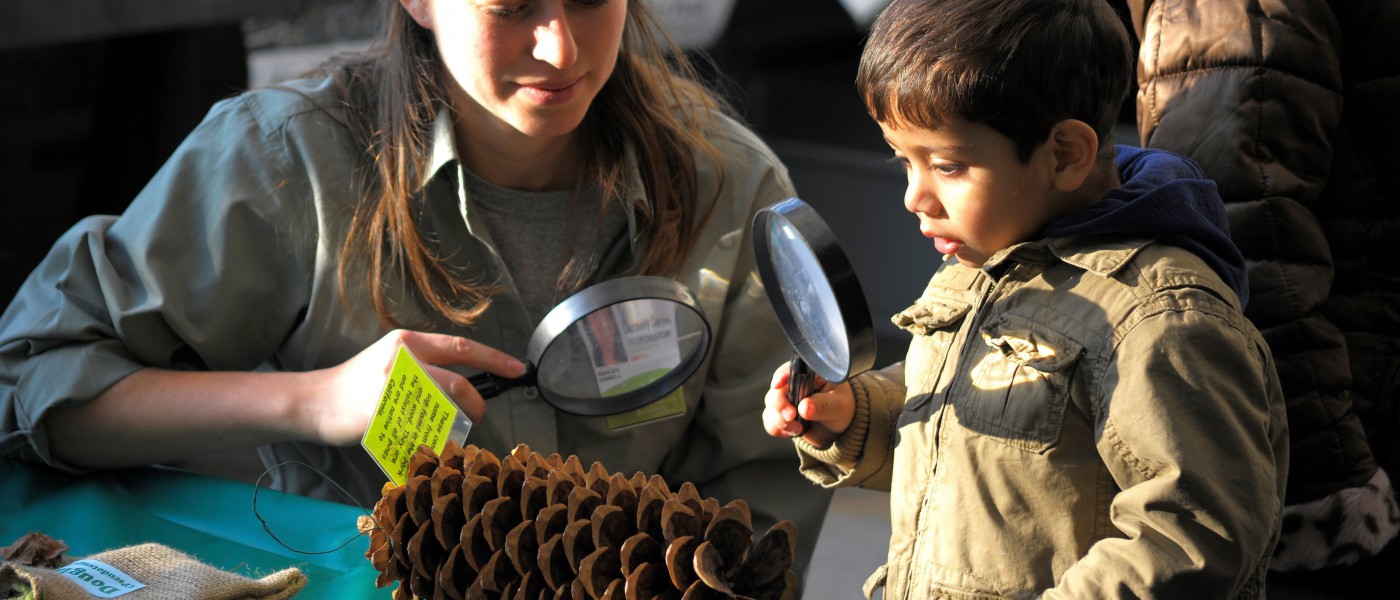Trees & Saplings FAQ
Trees & Saplings is a program for 2- and 3-year-olds with a caregiver. In this active, hands-on program, our youngest gardeners work with their adult partner to go on scavenger hunts, harvest in the Garden, sing songs, taste new foods, and create nature crafts.
Each Trees and Saplings class is designed for both the adult and the young child enrolled in the program to begin to practice basic horticultural skills. Depending on the season, the child/adult pair will: plant seeds and transplants, dig, mulch, weed, water and harvest.
We also include in each session developmentally appropriate extension activities that relate to what you will see and do in the Garden such as simple cooking projects, lots of tasting experiences (either straight from the garden or prepared dishes), crafts, stories and songs.
Both child and adult should dress for gardening! We will spend part of every class (except in the case of extremely bad weather) in the Children's Garden field taking care of our garden plots. Both participants—child and caregiver—should wear boots or closed-toe shoes (no sandals). Wear clothes that can get messy during gardening, cooking, or craft making.
Students should bring along a water bottle to stay hydrated while working outdoors. We harvest whatever is ripe or ready each session (this means much less in winter and early spring, bounties in summer and fall). Pack a harvest bag to carry home the day's vegetable harvest. A hat and sunblock should be worn while out in the sun.
10:00-10:10 a.m.: Investigation station
10:10-10:15 a.m.: Welcome song
10:15-10:25 a.m.: Theme of the day
10:25-10:45 a.m.: Garden work
10:45-11:00 a.m.: Craft project
11:00-11:15 a.m.: Make a garden snack
11:15-11:25 a.m.: Story and snack time
11:25-11:30 a.m.: Good-bye song
- Arrive on time or a few minutes early to class—feeling rushed or joining an activity midway though it can make your child feel uncomfortable and confused. Try to take care of snack and bathroom needs before class begins.
- Become familiar with the routines of class—coming each week and reinforcing ideas and concepts at home will help your child feel confident about what to expect and how to participate in class.
- Consider how Trees and Saplings fits with your child's nap schedule. A tired child can find it hard to focus and participate.
- Model engaged behavior—your excitement and participation will encourage your child to join in during class.
Learn more about the Children’s Garden


